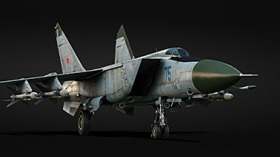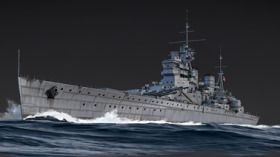
- For PC
- For MAC
- For Linux
- OS: Windows 10 (64 bit)
- Processor: Dual-Core 2.2 GHz
- Memory: 4GB
- Video Card: DirectX 11 level video card: AMD Radeon 77XX / NVIDIA GeForce GTX 660. The minimum supported resolution for the game is 720p.
- Network: Broadband Internet connection
- Hard Drive: 23.1 GB (Minimal client)
- OS: Windows 10/11 (64 bit)
- Processor: Intel Core i5 or Ryzen 5 3600 and better
- Memory: 16 GB and more
- Video Card: DirectX 11 level video card or higher and drivers: Nvidia GeForce 1060 and higher, Radeon RX 570 and higher
- Network: Broadband Internet connection
- Hard Drive: 75.9 GB (Full client)
- OS: Mac OS Big Sur 11.0 or newer
- Processor: Core i5, minimum 2.2GHz (Intel Xeon is not supported)
- Memory: 6 GB
- Video Card: Intel Iris Pro 5200 (Mac), or analog from AMD/Nvidia for Mac. Minimum supported resolution for the game is 720p with Metal support.
- Network: Broadband Internet connection
- Hard Drive: 22.1 GB (Minimal client)
- OS: Mac OS Big Sur 11.0 or newer
- Processor: Core i7 (Intel Xeon is not supported)
- Memory: 8 GB
- Video Card: Radeon Vega II or higher with Metal support.
- Network: Broadband Internet connection
- Hard Drive: 62.2 GB (Full client)
- OS: Most modern 64bit Linux distributions
- Processor: Dual-Core 2.4 GHz
- Memory: 4 GB
- Video Card: NVIDIA 660 with latest proprietary drivers (not older than 6 months) / similar AMD with latest proprietary drivers (not older than 6 months; the minimum supported resolution for the game is 720p) with Vulkan support.
- Network: Broadband Internet connection
- Hard Drive: 22.1 GB (Minimal client)
- OS: Ubuntu 20.04 64bit
- Processor: Intel Core i7
- Memory: 16 GB
- Video Card: NVIDIA 1060 with latest proprietary drivers (not older than 6 months) / similar AMD (Radeon RX 570) with latest proprietary drivers (not older than 6 months) with Vulkan support.
- Network: Broadband Internet connection
- Hard Drive: 62.2 GB (Full client)
What can we do now?
Interaction with the terrain and changing its shape is one of the main features of the upcoming "Ground Breaking" update. This is an additional element of interactivity that diversifies the gameplay in War Thunder tank battles. Soil, sand and snow are now not only authentically crushed under the tracks of tanks - you can dig out shelters, and bombs leave huge craters! Ramparts and craters will now create cover for vehicles and can seriously change the usual routes in War Thunder locations - both for you and the enemy team.
Ground vehicles and dozer blades
Many armies of the world make use of dozer blades on tanks. For example, in the Soviet army, from the T-72 onwards, equipment for self-entrenching was installed on all main battle tanks and some armored vehicles, and a corresponding standard appeared in the training of tank crews. Many western tanks have dozer blades both in the basic configuration and in modifications for street fighting or engineering purposes. Dozer blades and tank shovels are present on many ground vehicles in War Thunder as well, and in the "Ground Breaking" update, all of them will receive an animation of the blades sinking into the ground. Using the entrenchment equipment players will be able to quickly build tank trenches anywhere in a game location, where there are no buildings, rocks, boulders, ice or paved roads around.
Entrench!
Put the dozer blade down and rake an earthen dugout in front of you. Take it back and repeat the procedure again and again. When self-entrenching, the speed of the tank decreases due to the lowered blade, so it is advisable not to be seen by the enemy during mining operations. A few rolls - and the trench is ready. A long-term firing position with a tank inside appears literally in an open field: be it the Kursk steppes, the pastoral fields of the Maginot Line, the sands of desert maps or the snowy plains of winter locations. The tank hides its vulnerable hull, meeting enemy fire only with a turret. In addition, a tank hiding in a trench is much more difficult to hit! However, the earthwork is not an absolute shelter - you can penetrate it with a powerful kinetic or shape-charged projectile, but the thicker the earthworks are, the more difficult it is to get through.
Bomb craters
Now ammunition with a significant mass of explosives leaves craters on the soft terrain in tank locations. Air bombs weighing approximately 50kg or above, heavy rockets and missiles form a pit, the diameter and depth of which depend on the mass of the explosives. For example, a small armored car or self-propelled gun will fit into a crater from a 250kg bomb, and a crater from a 5,000 kg Pe-8’s “Tzar Bomb" will easily cover several heavy tanks at once. In the bomb craters you can hide from enemy fire, and lifting from the bottom of a deep hole to its rim can become a problem for vehicles with poor off-road performance. Explosion craters can significantly affect gameplay, making it difficult to access certain positions or providing cover in open areas.

_4bbd553d5f7964dfd08891c3a33e7654.jpg)
_5922efb1169d2def5798ab832c8d4073.jpg)




Comments (96)
So how will this work when you crater the spawn, and given the current tank climbing issues, no one can climb out of said spawn?
pe-8 seems like very fun now
yeah that was the first thing i said in public matches when i saw the update thrailer :D
so we can now make craters but we cant go out because of no traction NICE and arty is broken and stuck in the crater you are an easy kill
Maybe we will be lucky enough to get a proper traction update, too....
So maybe don't go into a crater with a wheeled vehicle? Just sayin.....
Can we get a List over Every Vehicle getting a Dozer Blade Modification? Also i wonder how this will be considering the current state of Vehicle Traction.....
As if environmental drivers weren't already over-burdened. Solve the burning tank issue...create a bottomless pit issue, GJ Giajin.
this give me hope that we can see Sherman bulldozers and Churchill AVRE!
pls gaijin. lord snail. give us back our traction now. pls.
Is there a limit as to how deep you can theoretically make a crater? Or could you get 4 Pe-8s and make enemy spawn impossible to get out of?
It's not Minecraft. You cannot dig cave or big pits.
Stona_WT, So, you are saying that i can't craft my own rounds and add-on armor?
If traction is not touched this can potentially be a complete disaster.
How about the fact that youre gonna remove unused universal backups if they arent used. Scumbag move, youve really done what you can to screw over the playerbase.
Wait, what? Why? Am I going to get all my warbonds returned that I spent on them? WTH is this, Gaijin?
Hey where did you see this? If that's true that is some serious next level BS right there
Farm Thunder
Warthunder Farm Simulator XD
Ohh baby! This is going to be a fun addition :D I think it will give a lot more options on some of the.. less loved maps. Maybe make bombers in ground forces more viable and interesting.
Can you fix traction please? If people are abusing map locations then just put some rocks on the map so they can't climb. Come on Gaijin, our tanks can barely climb.
Submit a complaint